By Miva | December 13, 2017

See why top ecommerce brands use Miva’s no-code platform to run
multiple stores, manage massive catalogs, and grow their revenue.
In 2016, consumers spent $327 billion online—a trend which only continues to rise. Are you effectively promoting your business to claim a slice of sales online?
The secret to ecommerce success in 2018 lies in driving strategic, targeted traffic to your store.
In a marketplace saturated with competition, driving traffic to your online store will not only win more customers; it will also increase sales. Increase traffic to your online store with these four strategies.
Word of Mouth Marketing (WOMM) has long been called “the original social media platform”, and for good reason—92% of consumers believe recommendations from friends and family over all forms of advertising (Forbes).
71% of consumers who have had a good experience with a brand on social media are likely to recommend it to others. (Ambassador)
Master WOMM and you dominate your market. With the widespread reach of social media, you can get consumers talking—and purchasing—that much faster.
SEO, or search engine optimization, is the process of gaining traffic from organic search queries.
93% of online experiences begin with a search engine. (Search Engine Journal)
Search engines such as Google, Bing, and Yahoo use algorithms to crawl and rank websites. The more relevant your content, the more visible your site.
Interested in improving your SEO? Visit our blog for 5 Simple Ways to Improve SEO for Your Online Store.
Where retailers once looked to physical directories, local business listings on the Internet can capture those seeking your product or service online.
78% of local searches on mobile and 61% of local searches on laptops result in offline purchases. (Search Engine Land)
A local business listing is an online entry that contains your business name, address, and phone number (NAP) along with other details. Several websites today allow businesses to create free listings—a particularly useful traffic driver for retailers with brick-and-mortar stores.
Top search engines for local business listings include:
Once you’ve listed on the major search engines, choose platforms relevant to your industry. Angie’s List is a leading business directory for home and healthcare while TripAdvisor targets travel and hospitality needs.
There are three key ways to target your audience online: intent based advertising, demographic or psychographic advertising, and geographic or area-based advertising.
Purchase intent is the measure of probability that a consumer will purchase a service or product. Through intent based advertising, you can reach the right customers with the intent to buy.
Common intent based advertising methods include:
In his book Tribes: We Need You to Lead Us, marketing guru Seth Godin explains that people tend to operate in tribes bearing a resemblance to their own demographics and/or psychographics.
Demographic advertising refers to parameters which are used to segment an audience into specific groups. Commonly used demographics include gender, age, location, language, and income. Psychographic advertising, on the other hand, targets psychological criteria: attitudes and aspirations which can’t be measured by a census alone.
Savvy retailers have found success by advertising to consumers within certain demographic and psychographic categories via:
Similar to local business listings, geographic advertising allows you to target consumers based on location—through social media, and offline:
No longer can online retailers expect to draw customers organically. Beat your competition and increase sales through strategic, targeted traffic to your online store. By understanding where your customers are and how they want to be reached, you stand to win new customers—and their business.

Cheryl Elizaga is a Brand Strategist and Copywriter with nearly a decade of experience catalyzing meaningful, measurable action for Fortune 100 companies and industry pioneers alike. A contributing author to the Miva Blog, Cheryl helps ecommerce companies own their brand and harness the tools and technology of the leading Miva platform to drive growth.
Love it? Share it!
No worries, download the PDF version now and enjoy your reading later...
Download PDF Miva
Miva
Miva offers a flexible and adaptable ecommerce platform that evolves with businesses and allows them to drive sales, maximize average order value, cut overhead costs, and increase revenue. Miva has been helping businesses realize their ecommerce potential for over 20 years and empowering retail, wholesale, and direct-to-consumer sellers across all industries to transform their business through ecommerce.
Visit Website